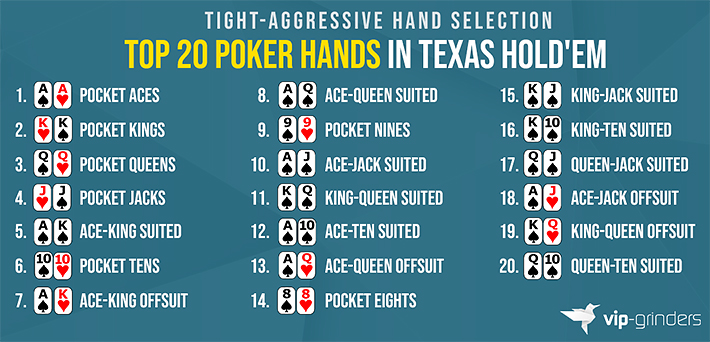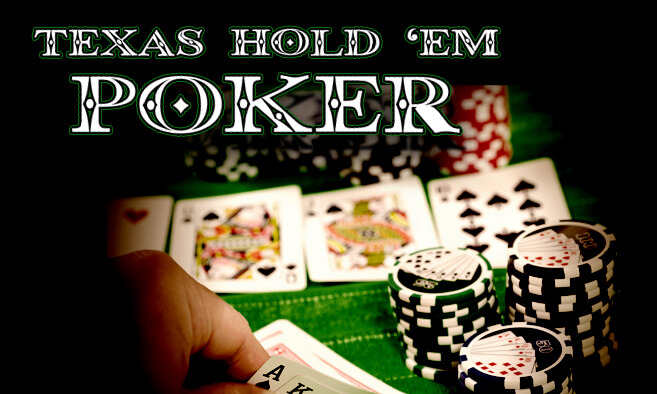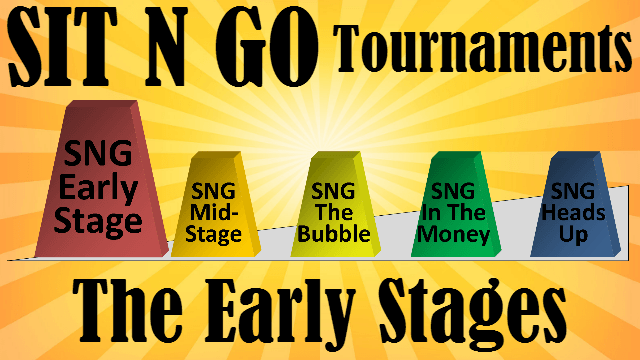Poker Strategy Tips That Will Make You Win More: Beginner to Advanced Guide
Poker strategy in 2025 requires mastering a range of skills across different game types and formats.
Whether you are a beginner or an experienced player, this hub delivers clear, actionable advice and proven techniques to improve your game, increase your win rate, and dominate the tables.
Poker Strategy Articles & Free Poker Coaching
Online poker is getting tougher every year, so it becomes more and more important to have the best-possible poker strategy.
The purpose of our poker strategy zone is to give all player levels poker strategy guide that are current, authoritative and practical.
Our in-depth guides will focus on the most popular formats: Texas Hold’em, Pot-Limit Omaha, poker tournaments (including MTTs, SNGs, and Spin & Gos). We will also touch on variables such as Short Deck Poker, Razz and other real money poker formats.
Words of wisdom from the Godfather of poker: “The fundamental principle in poker is patience.” — Doyle Brunson
Beginner Poker Strategy Fundamentals
Texas Holdem Hands
Focus on playing a tight-aggressive range. Use starting hand charts tailored for each game type to choose strong hands pre-flop and avoid unnecessary risks.

Positional Play
Position dictates your decisions both before and after the flop. Play more hands from late position and tighten up when out of position to reduce difficult spots.
Basic Betting & Raising Concepts
Understand pot odds and implied odds to make profitable calls and folds. Use continuation bets effectively to control the pot and put pressure on opponents.
Avoiding Common Mistakes
Don’t overplay weak or marginal hands. Avoid chasing draws without the correct odds. Discipline in hand selection and betting is key to success.
Pro Tip: “I think that the worst form of tilt for a professional poker player is auto-pilot. The reason it’s so dangerous is that it happens so often when people are either upset or just not focused.” — Phil Galfond
Poker Bankroll Management
Maintain proper bankroll discipline by choosing stakes where your buy-ins range between 30 to 50 for cash games and 100+ for tournaments to avoid risking too much on any single game.
Poker Game Selection
For beginners, focus on No-Limit Hold’em cash games, small Multi-Table Tournaments (MTTs), and freerolls to build skills without risking excessive bankroll.
Intermediate & Advanced Poker Strategy Concepts
3 Game Theory Optimal (GTO) Play Tips:
- 1Understand the core concept of GTO and why it provides an unexploitable baseline strategy.
- 2Learn to balance your ranges and bluff frequencies to avoid predictability.
- 3Apply exploitative adjustments by reading opponents’ tendencies and adapting your strategy to maximize value.
4 Advanced Post-Flop Play Concepts
- 1Master bet sizing strategies including standard, polarized, value, and semi-bluff bets to control pot size and pressure opponents.
- 2Use multi-street betting and check-raising to extract maximum value and protect your range.
- 3Incorporate blockers and leverage in decision-making to improve hand strength evaluation.
- 4Analyze board textures and construct ranges effectively to make optimal decisions.
- 5Who GGPoker is best for and and how it compares to other rooms
Tournament-Specific Poker Strategy
In tournament play, apply the Independent Chip Model (ICM) to make accurate decisions during critical stages such as the bubble and final table. Use push/fold charts and short-stack tactics to maximize your fold equity and increase your chances of survival.
Recognize when to ramp up aggression in the later stages of tournaments by considering your stack size and the payout structure.
6 Mental Tips for Advanced Poker Strategy
- 1Identify tilt triggers early and apply proven tilt management techniques.
- 2Develop focus and emotional control skills essential for long sessions and high-pressure situations.
- 3Establish regular hand review and analysis practices.
- 4Use solvers like Hold'em Manager efficiently to understand balanced strategies.
- 5Make use of our VIP Grinders calculator suite, to help master equity, pot odds, ICM and other areas of your game with precision.
Poker Strategies Per Game Variant
Texas Hold’em Strategy
No-Limit Hold’em is the most popular poker variant, requiring solid positional play and adjustment of hand ranges depending on whether you’re in a cash game or tournament.
Post-flop aggression and 3-betting are crucial tools to control the pot and pressure opponents. To read in more depth, you can jump to our dedicated Texas Hold’em strategy guide.
Key Differentiators:
- Ability to bet any amount up to your entire stack (No-Limit).
- Strong emphasis on positional advantage pre-flop and post-flop.
- Distinct strategic adjustments between cash games and tournament play.

Pot-Limit Hold’em limits bets to the current pot size, tempering aggression and promoting measured value betting. Check-raises become an essential tactic to build pots with strong hands.
Key Differentiators:
- Maximum bet size is limited to the current pot (Pot-Limit).
- Aggression is more controlled compared to No-Limit.
- More importance on tactical check-raising for value.
Limit Hold’em has fixed bet sizes and capped raises each round, focusing gameplay on careful value extraction and pot management rather than large all-in moves.
Key Differentiators:
- Fixed small and big bets per round; limited raises.
- Less emphasis on stack sizes, more on incremental betting.
- Focus on pot control and incremental advantage.
Pot-Limit Omaha (PLO) & Omaha Hi-Lo Poker Strategy
Pot-Limit Omaha deals four hole cards and requires using exactly two with three board cards, which creates stronger nut hands and more drawing possibilities.
Omaha carries higher variance and requires tighter bankroll management. To go into the finer points of Omaha, read our Beginner’s Omaha guide then move onto our Advanced PLO strategy guide.
Key Differentiators:
- Four hole cards per player with a two-card usage rule.
- Strong focus on nuts and nut draws due to hand combinations.
- Higher variance and larger swings compared to Hold’em.
Omaha Hi-Lo splits the pot between the highest and lowest qualifying hands, adding a complex dual-goal element to each hand.
Key Differentiators:
- Pot split between high and low hands (“scooping”).
- Requires balanced hand selection to compete for both halves.
- Strategic adjustments around low-hand qualification.
Other Popular Poker Variants
Razz
Razz is a lowball game where the lowest five-card hand wins, making hand visibility and exposed cards critical to strategy.
Key Differentiators:
- Goal is the lowest possible hand, opposite to most variants.
- Players use visible cards to deduce opponents’ holdings.
- Limited betting rounds but strong focus on card tracking.
Seven-Card Stud
Seven-Card Stud features multiple betting rounds with visible upcards, emphasizing pattern recognition and opponent reading.
Key Differentiators:
- No community cards; players use personal upcards and downcards.
- Hand strength visible to opponents heavily influences betting.
- Sequential betting rounds requiring attentive tracking of revealed cards.
Mixed Games
Mixed Games like HORSE rotate through several variants, testing player adaptability and mastery over multiple strategic formats.
Key Differentiators:
- Constant shift between different poker variants.
- Requires broad skill set and quick adjustment.
- Often played in higher-stakes or professional settings.
Short Deck Poker
Short Deck Poker uses a smaller deck, which changes hand rankings and increases the frequency of strong hands and action.
Key Differentiators:
- Deck reduced by all cards below 6.
- Hand strength hierarchy adjusted (e.g., flush beats full house).
- Faster, more action-oriented gameplay.
Tournament Poker Strategy
Multi-Table Tournaments (MTTs)
In early MTT stages, carefully select opening ranges and control the pot size to protect your stack.
Adapt your play in the middle stage based on chip accumulation and table dynamics.
Use pressure tactics on the bubble and adjust for payout pressure during final table play. Read our full Texas Hold’em Poker Tournament Strategy guide for more in-depth tips.
5 VIP Grinders Poker Strategy Tips for MTTs:
- 1Play tight early, especially from early positions, to avoid risky spots.
- 2Expand your range as blinds increase to steal blinds and antes effectively.
- 3Use fold equity aggressively at the bubble to accumulate chips.
- 4On the final table, adjust your strategy depending on opponents’ tendencies and payout jumps.
- 5Manage your emotions; stay patient as MTTs involve significant variance.
Pro tip: “Tournament play demands patience to survive and win. Winning at cash games demands a whole other level of thought and deception.” — Daniel Negreanu

Sit & Go Tournaments (SNGs) Poker Strategy
SNGs require tight play during the early stages with late-stage aggression to capitalize on chip leads. Focus on push/fold decisions late in the game, especially around the bubble.
5 VIP Grinders Tips for SNGs:
- 1Play tight and avoid speculative hands early.
- 2Use position to steal blinds in the mid-game.
- 3Apply pressure on opponents when approaching the bubble. Read out SnG bubble strategy guide.
- 4Memorize push/fold charts to make optimal all-in decisions.
- 5Adjust your ranges depending on payout structures and stack sizes.

Spin & Go Hyper-Turbo Tournaments
Spin & Gos are fast-paced hyper-turbos where push/fold fundamentals dominate due to the short stacks and blind levels. Effective aggression management is crucial, with multipliers influencing how aggressively you push.
5 VIP Grinders Tips for Spin & Gos:
- 1Push or fold almost exclusively; post-flop play is rare.
- 2Calculate fold equity when deciding to shove.
- 3Adjust aggression based on multiplier size to maximize potential payout.
- 4Learn to read opponent tendencies quickly despite the format’s speed.
- 5Bankroll management is critical; variance is high in hyper-turbos.

AI Summary TL;DR: Poker Strategy in 2025 – What the Pros Know
Top pros combine solid Game Theory Optimal (GTO) fundamentals with sharp exploitative adjustments tailored to opponents. They avoid autopilot, make fearless, high-expected-value decisions, and manage emotions to avoid tilt. Successful players also embrace continuous study and mindset improvement as keys to long-term winning. Additionally, strict bankroll management, positional awareness, and a tight-aggressive style remain foundational for beating modern cash games, tournaments, and spin & gos.
Poker Strategy for Cash Games
Unlike tournaments, there is no increasing blind structure forcing fast action in cash games, and you can rebuy infinitely, which changes strategic priorities.
In low-stakes cash games, players tend to be looser and less experienced, giving opportunities to exploit obvious mistakes. High-stakes games require a more balanced, GTO-influenced strategy as opponents are more skilled and unpredictable.
When multi-tabling cash games, managing your focus and session length is critical to maintain decision quality and avoid chronic tilt. Shorter, disciplined sessions help reduce mistakes due to fatigue.
Bankroll management for cash games involves having 20-50 buy-ins for the stakes you play to absorb variance comfortably. Tilt control is vital—unmanaged tilt can lead to rapid loss even with a good strategy.
Top 5 VIP Grinders Cash Game Strategy Tips
- 1Think About Hand Ranges: Not Individual Hands: Focus on hand ranges to better predict opponents’ holdings and make more informed decisions rather than fixating on specific cards.
- 2Play Aggressively with Strong Hands Pre-Flop: Always 3-bet your monsters and strong hands to build the pot and apply pressure on weaker players.
- 3Use Position to Your Advantage: Play more hands and be more aggressive in late position, while tightening up from early positions to avoid difficult spots.
- 4Isolate Limpers Often: Players who limp frequently can be targeted by raising to isolate and put them under pressure, capitalizing on their weaker ranges.
- 5Defend Your Big Blind: Defend your big blind frequently against raises with a broad range of hands, especially suited and connected cards, due to the favorable pot odds.
Bankroll Management & Variance Control
Proper bankroll management is essential for long-term success in poker.
Different game formats require varying buy-in cushions due to their inherent variance: cash games generally need 20 to 40 buy-ins, while tournaments, especially multi-table tournaments (MTTs), require 50 to 100 buy-ins.
Recommended Bankroll Management Buy-ins:
| Poker Format | Suggested Minimum Buy-ins | Notes |
|---|---|---|
| Cash Games (Low Stakes) | 20 – 40 buy-ins | Deeper stacks require more buy-ins; vary by skill/variance level |
| Cash Games (High Stakes) | 30 – 50 buy-ins | Higher skill and variance require larger bankrolls |
| Multi-Table Tournaments (MTTs) | 50 – 100 buy-ins | High variance and top-heavy payouts necessitate bigger bankrolls |
| Sit & Go Tournaments (SNGs) | 30 – 50 buy-ins | Moderate variance, mid-range buy-in requirement |
| Spin & Go Hyper-Turbos | 50 – 100 buy-ins | Extreme variance and hyper-turbo blind levels demand bigger bankrolls |
5 Poker Bankroll Golden Rules
- 1No player wins long-term without proper bankroll management, regardless of skill level.
- 2Always have enough buy-ins to absorb losing streaks based on the game you play.
- 3Never risk more than 5% of your total bankroll in a single cash game session; tournaments require more conservative buffers.
- 4Move down in stakes if your bankroll drops by 20-30% to avoid going broke.
- 5Track your results diligently and use the data to adjust stakes and strategy.
Poker Tools, Software & Training Resources
Best HUDs and Tracking Software
PokerTracker 4 and Hold’em Manager 3 remain the top HUD and tracking software in 2025. These tools provide real-time stats on opponents, detailed hand histories, and advanced analytics to spot leaks and improve decision-making.
PokerTracker 4 especially is praised for its user-friendly interface, Mac compatibility, and extensive study features. Other strong options include Hand2Note, DriveHUD, and Poker Copilot.
GTO Solvers Overview and Usage
GTO solvers like PioSolver and GTO+ allow players to study balanced Game Theory Optimal strategies by solving complex poker spots.
Solvers require practice to interpret solutions, but when integrated with hand history review, they accelerate strategic improvements.
How to Analyze Your Play and Incorporate Feedback
Analyze your play by reviewing hand histories and tracking session results in HUD/software databases. Identify recurring mistakes, adjust your ranges/lines, and test changes in low-stakes games before moving up to higher stakes.
Poker Strategy FAQs
What is the fundamental principle of poker strategy?
Patience is the fundamental principle of poker strategy; it helps avoid costly mistakes over the long term.
How should beginners select hands to poker holdem hands to play?
Beginners should focus on a tight-aggressive range using starting hand charts tailored to each game type to avoid unnecessary risks.
Why is positional play important in poker?
Position impacts every decision; playing more hands in late position and tightening early reduces difficult spots and improves profitability.
How do pot odds and implied odds influence betting decisions?
Understanding pot odds and implied odds helps you make profitable calls and folds, guiding correct betting actions like continuation bets.
What common mistakes should I avoid as a poker player?
Avoid overplaying weak or marginal hands and chasing draws without correct odds; discipline in hand selection and betting is key to success.
How important is bankroll management?
Maintaining bankroll discipline with 30-50 buy-ins for cash games and 100+ for tournaments is vital to avoid risking too much and manage variance.
What is Game Theory Optimal (GTO) play?
GTO is a balanced, unexploitable baseline strategy combining balanced ranges and bluffing frequencies to avoid predictability.
How do advanced players improve post-flop play?
They master bet sizing, use multi-street betting and check-raises, incorporate blockers, and analyze board textures to make optimal decisions.
What is the Independent Chip Model (ICM) in tournaments?
ICM is a mathematical model used to make accurate decisions during critical tournament stages like the bubble and final table based on payout implications.
What are the most popular poker variants?
Texas Hold’em, Pot-Limit Omaha (PLO), Omaha Hi-Lo, Razz, Seven-Card Stud, Mixed Games like HORSE, and Short Deck Poker are key variants with distinct strategies.
How does cash game strategy differ from tournament play?
Cash games have deeper stacks with no increasing blinds, allowing for complex post-flop decisions and exploitative play, while tournaments focus on survival and stack preservation.
What mental game tips help advanced players?
Identify tilt triggers early, develop emotional control, maintain focused study and review routines, and manage sessions discipline to sustain long-term results.
What tools are recommended for studying poker?
HUDs and tracking software like PokerTracker and Hold’em Manager, GTO solvers such as PioSolver and GTO+, and training platforms including Run It Once and Upswing Poker.











